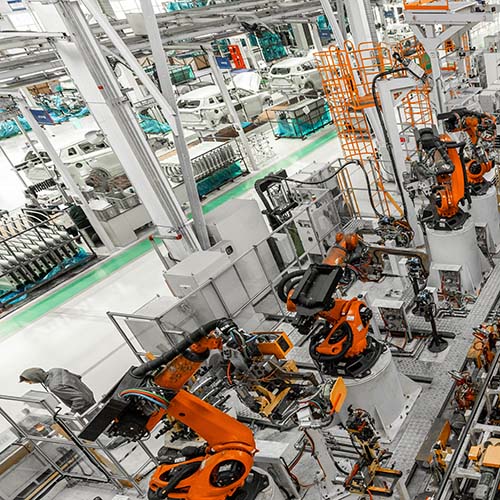Automotive manufacturing involves various stages of parts handling, from raw materials to assembled components. These processes often require repetitive motions, lifting, and maneuvering of heavy or awkwardly shaped parts. Without a proper ergonomic cart or workstation, workers can be prone to musculoskeletal disorders (MSDs), such as back injuries, sprains, and repetitive strain injuries, which can lead to lost productivity, increased absenteeism, and higher healthcare costs.
The Benefits of Ergonomic Carts
Ergonomic carts are specifically designed to alleviate the physical strain associated with manual material handling tasks. By integrating ergonomic principles into their design, these carts can significantly improve worker safety, comfort, and efficiency. Here are some key benefits of using well-designed carts for automotive parts handling:
- Reduced Risk of Injuries: Ergonomic carts are engineered to minimize awkward postures, excessive reaching, and heavy lifting, which are common causes of MSDs. Features like adjustable heights, tilting surfaces, and ergonomic handles can help workers maintain proper body mechanics, reducing strain on the back, shoulders, and other vulnerable areas.
- Improved Productivity: When workers are not hindered by physical discomfort or the risk of injury, they can work more efficiently. Ergonomic carts can streamline material handling processes, reducing the time and effort required for tasks such as loading, unloading, and transporting parts.
- Enhanced Workplace Safety: By mitigating the risk of injuries, ergonomic carts contribute to a safer work environment. This not only protects workers but also helps employers comply with occupational health and safety regulations, reducing the potential for costly fines and legal issues.
- Increased Worker Satisfaction: Ergonomic solutions demonstrate an employer’s commitment to the well-being of their workforce. When workers feel valued and supported, job satisfaction and morale tend to improve, leading to higher retention rates and a more engaged workforce.
Customizing Ergonomic Carts for Automotive Parts Handling
No two automotive manufacturing facilities are exactly alike, and the parts handled can vary significantly in size, shape, and weight. To maximize the benefits of ergonomic carts, it is essential to customize them to meet the specific needs of the application and user population.
Experienced ergonomic cart manufacturers, like Salco Engineering, offer a wide range of customization options to ensure optimal ergonomic performance. These may include:
- Adjustable Height and Tilt: Carts with adjustable height and tilt mechanisms allow workers to position parts at comfortable levels, reducing the need for excessive bending, reaching, or straining.
- Specialized Surfaces and Shelving: Anti-slip surfaces, dividers, and customized shelving can help organize and secure parts during transport, minimizing the risk of shifting or falling loads.
- Ergonomic Handles and Controls: Well-designed handles and controls can reduce grip force requirements and encourage neutral wrist postures, minimizing the risk of repetitive strain injuries.
- Load Capacity and Mobility: Carts should be designed to accommodate the weight and size of the parts being handled while still being easily maneuverable, even in tight spaces or on uneven surfaces.
By working closely with ergonomic experts and cart manufacturers, automotive companies can develop tailored solutions that address the unique challenges of their parts handling processes, ensuring optimal worker safety, comfort, and productivity.
Investing in Ergonomic Carts for Long-Term Benefits
While the initial investment in ergonomic carts may seem significant, the long-term benefits often outweigh the costs. By reducing the risk of injuries, lost workdays, and worker’s compensation claims, ergonomic carts can lead to substantial cost savings over time.
Furthermore, the improved efficiency and productivity gained from ergonomic solutions can translate into increased output and faster turnaround times, providing a competitive edge in the automotive industry.
Implementing ergonomic carts is not just a matter of worker well-being; it’s a strategic business decision that can positively impact overall operations, profitability, and organizational sustainability.
By prioritizing ergonomics in automotive parts handling, companies can create a win-win situation for both their workers and their bottom line, ensuring a safer, more productive, and more resilient workforce for years to come.



